Photograghs linked are taken from the other side of Takase River.Sanjo Kobashi is at the right end.
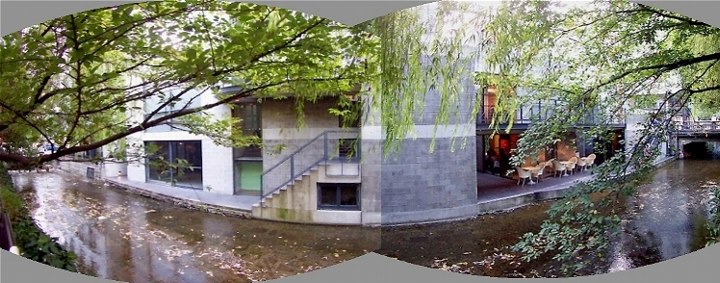
It was a twenty minutes taxi ride from JR Kyoto Station to Sanjo Ohashi. It appears on the left side.
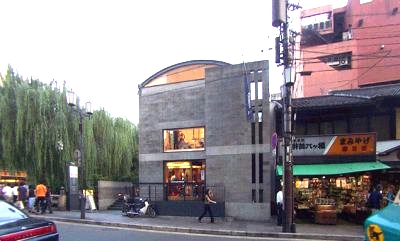
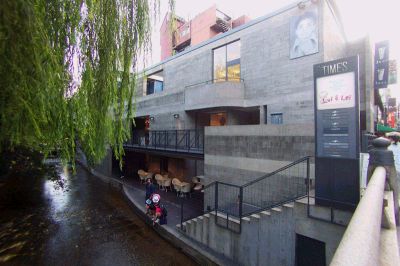
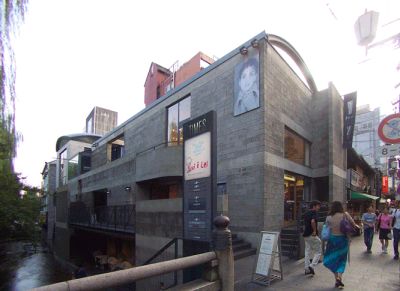
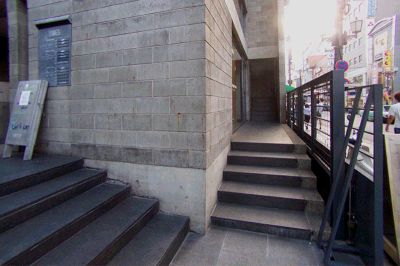
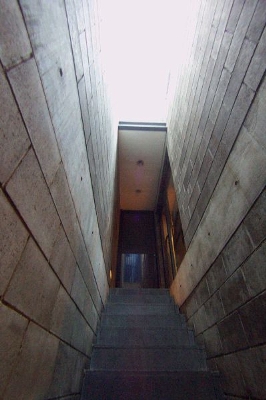
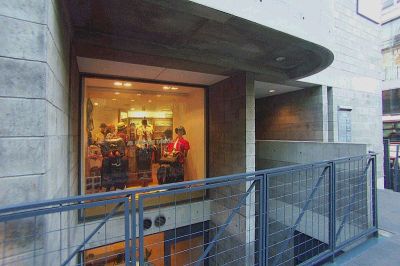
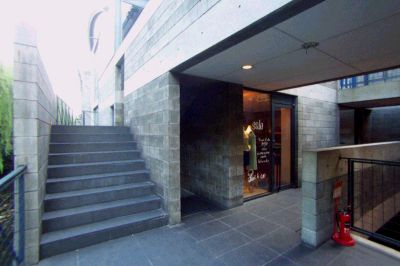
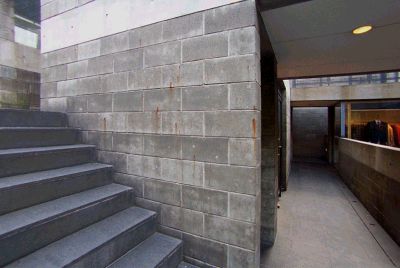
Experiencing TIME,S I for the first time, I was much impressed to see it standing so serene in calm atmosphere.I already knew that it stood by the riverside. Such closeness to the river running seems to be of a value.Besides, what was most impressive this time was that the blocks of the exterior wall were getting dingy but were unexpectedly producing a kind of serenity of the building.The architectural concrete of the famous architecture of the modern is usually restored to the stage of construction upon renewal since it is generally thought that the large monotonous plane of the wall of the modern will not endure aesthetic appreciation after years of wind and rain. This building was constructed in 1985. There was a peculiar contrast between that of dingy exterior enduring 16years and that of the primary colored and fancy interior of inner space. What a serene atmosphere was created! I wonder if there is such atmosphere produced in the row house of Sumiyoshi as well?
If you take a look at the concrete block wall in the picture above, you,ll notice that it is covered with rust here and there.This is possibly that iron core was included in the aggregate which turned out as rust after years of wind and rain. I know that it is a questionable comment as to whether this rust may be considered a taste, but for me it is acceptible if the author is conscious about it. Every information concerning this point is always welcomed.
Enlarged picture of the block wall
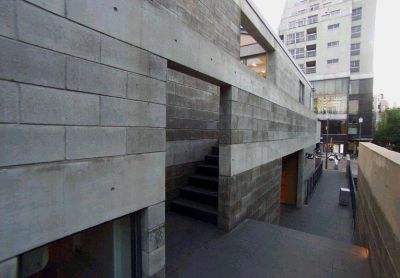
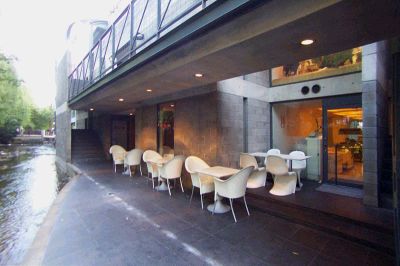
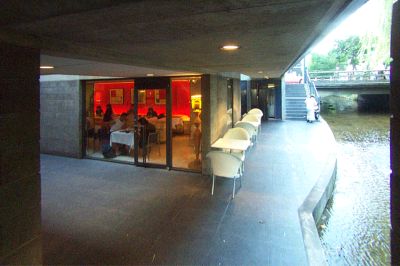
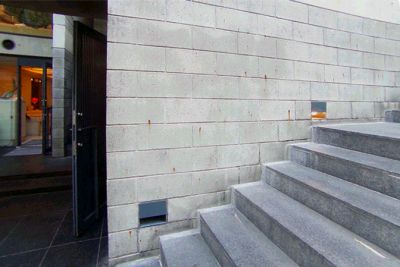
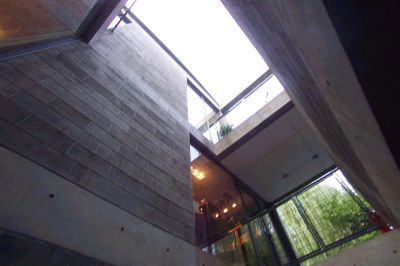
Up until now my only visiting experience of Ando,s architecture was the Corezzione (89)in Tokyo.
It was then rather incomprehensible to see the relationship between the staircase climbing into the windblown sky and the void rather narrow. Many other works I had only known through pictures in the magazine.
But through the visiting experience at the TIME,S I this time I was convinced of the presence of"darkness" in his alleyway space. I was confronted with Ando,s depth in his architectural space sense especially through the maze of the alley space. The narrow void was set facing the sky and where there was no sky there was naturally a total darkness. I can,t help expecting for his further evolution in deepening this aspect.This was not possible to recognize just from the photographs in the magazine.I have received his message as the (architecturalization or the sophistication) of what you call an underground market.
Here is a white abstract space completely different from that of dark alleyway space above. Since the rest room is made abstract and hygienic in comparison with the darkness of the alley space,the synergistic effect seems to be there.While the young women generation may feel a little unacceptible about the dark alley,the presence of white abstract space may work supplementary to this unacceptible feeling.I think that the artist is totally conscious that the presence of darkness gives depth to the architectural space.Entering the building you feel hesitant at first as to whether you may go on or not in this back alley like space.But the shop girls let you come in and out freely that by and by you will get familiar and be free to go around.
There seems to be no other piece of architecture so blooming in introducing the darkness than this.
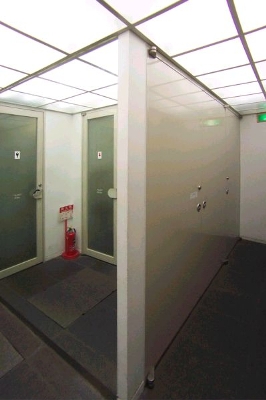 Homogeneous lighting ceiling
Homogeneous lighting ceilingThe door to the toilet reflected in the mirror. The mirror covers the whole wall.
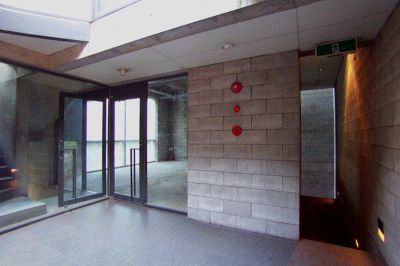 time's 2 ('92)
time's 2 ('92)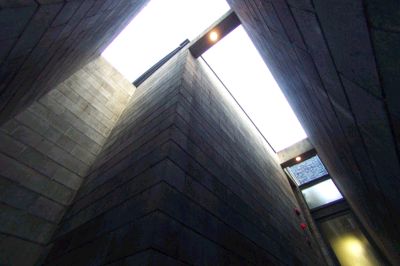
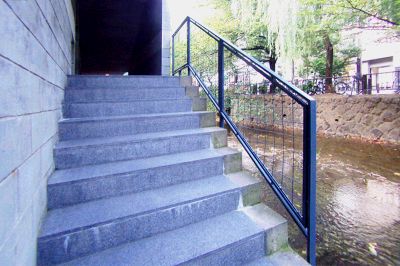
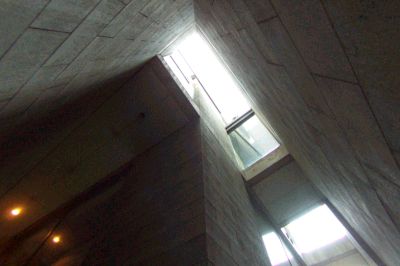
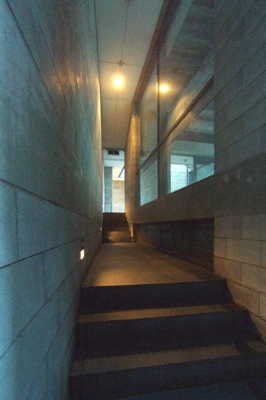
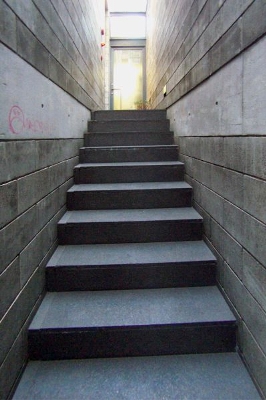
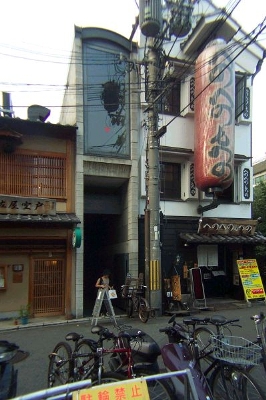 Passing through the alleyway you will get out to the other side of the street.
Passing through the alleyway you will get out to the other side of the street.It is said to be called the Ryuma Street.Looking at the observation map there was found a monument which said " Ryuma Sakamoto has lived here" I had overlooked.
back
